2022 Week 2: Youth and Education
Cionne Gates | By Peaceful Means
Since my placement last summer was completely remote, there weren’t a lot of external circumstances influencing my placement. This summer, we are working the entire summer with in-person modalities, which means navigating more areas of Baltimore which I lack a little experience in. For the first couple weeks, I have been in meetings and completing assignments virtually, but I have been able to engage in more social activities with friends. In contrast to last summer especially, I definitely think that being around interns encourages more professional reflection regarding y work and the work of my peers but also freedom for summer excursions. Balancing both professional obligations and adventurous endeavors presents this looming obstacle of time management, which essentially addresses my typical procrastination skills. Thankfully, I have made strides earlier in the week with time blocks to help reorganize my priorities on a weekly basis. Visually structuring my schedule helps me focus on being more efficient in completing work related assignments but also planning more friendly engagements with people inside and outside of CIIP. One major goal that I had for the summer is establishing more intimate connections with people and proactively plan collaboration events from other placements as potential learning lessons or Friday field trips. While I’m finishing up the last preparation placements for my placement this week, I had to manage presenting a BITES session on education inequality as fulfillment of my Peer Mentor duties. With the added leadership role this summer, time management is significantly crucial in how I’m fostering the relationships between the interns by exploring restaurants across multiple neighborhoods, and my dedication to social cohesion with my group helps me facilitate personal growth more effectively as a team. Yet, managing the dynamics of professionalism with the presentation on the Baltimore school system helped me refocus on both personal and professional responsibilities, and it motivates me to continue showcasing my effort towards an amazing summer in Baltimore with CIIP.
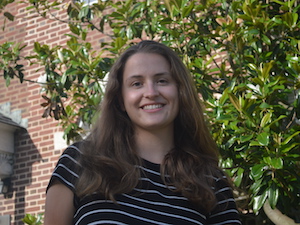 Hélène Girard | Village Learning Place
Hélène Girard | Village Learning Place
This week was orientation week for the Village Learning Place staff, and we went over the basics and the intricacies of youth education. Because VLP does not ask for tuition from its students, they operate off a multi-year federal grant (the same one as 29th Street Community Center), which comes with some stipulations. The most important of these is that they must provide an hour of continuous instruction about math or literacy every day. Considering the age of the younger Pre-K students and the fact that rest have just spent the entire year stuffed in classrooms, a large part of training was about how we could keep students involved throughout the learning process. A lot of it was asking the students abut their viewpoint before, during, and after the lesson. There are icebreaker questions, pre-lesson warm-ups, room for questions during the lesson, and most importantly, reflection. Circle time, as I’ve come to learn, is the crux of VLP. Inclusive time to listen and share is crucial for restorative justice, student engagement, and the general close-knit bond between LINK students and faculty. This coming Monday is the first day with the kids, and the program will run until August 5th. I will be working with Mr. Daniel’s class, and our first big project of the summer will be building a scooter from scratch. The kits are enormous and very detailed, so I’m very excited to see how they figure out the screws and minute parts as well as observing them to see who naturally takes which place in the team structures.
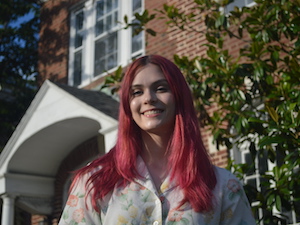 Helen Lacey | Dent Education
Helen Lacey | Dent Education
I started staff onboarding this week! It was great to meet the rest of the Dent summer staff, particularly the other fellows. Attending fellow training gave me a clearer idea of what my responsibilities this summer will be, something that I worried I did not have a completely clear understanding of. I’m excited to be a fellow who works closely with my site supporter to ensure that the program runs smoothly. I also had to attend coach training this week, which I felt really helped solidify both my understanding of the Dent mindsets and how to apply them while working with youth. During training, we spent time carefully unpacking the six mindsets: we fail fast and keep learning, we listen deeply, we ask why, we see problems as opportunities, we take action, and we start with we. We learned how each of these mindsets relates to design thinking with a human-centered approach, which is an essential aspect of every track that Dent teaches. Aside from what I learned this week about teaching these mindsets to youth, I think what resonated with me most was a speech given by Dent’s co-founder, Rajan. He described how he had to unlearn many of the things he was taught about how to be successful in his youth and replace them with the creative and human-centered thinking which inspired Dent’s mission. He explained how he applied each of the Dent mindsets when he designed the Embrace incubator, a device that saves babies born at low birth weight in developing countries. His story encouraged me to question the preconceived notions I hold about what success, learning, teaching, and building look like, by (as per the Dent mindsets) asking why. I am looking forward to applying these mindsets as I continue to grow both personally and professionally throughout my internship experience.
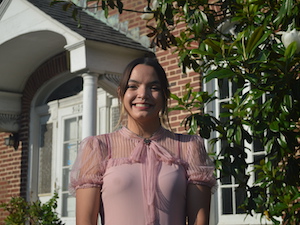 Mahalia Munalem | Hampden Family Center
Mahalia Munalem | Hampden Family Center
I have worked with youth in several capacities in the past but this week I was challenged with designing some of the curriculum for a summer enrichment program. Previously, I had coached a few teams of 7-11 year olds in my hometown’s recreational volleyball league and last semester I was a literacy tutor for two fourth graders from NY in a virtual fellowship for Teach For America. Going into my placement as a CIIP Intern for the Hampden Family Center I was uncertain of what my role in working with youth would be as my experience had normally been athletically or academically tailored; however, my super advisor Catey Yost and I discussed introducing lessons from Social & Emotional Learning as a core component of the HFC programming curriculum. Throughout this week, I was challenged by the curriculum creation process as I was accustomed to having a plan prescribed to me in my prior roles. On the first day, another program assistant and I sat down to decide what activities our young people would do during an hour of HFC-led enrichment. The center was partnering with Art with a Heart, Enoch Pratt Library, and the Roosevelt park and pool to provide programming throughout the week but most of the time would be spent in an upstairs youth programming space. We wanted to provide programming that would accommodate a diverse array of learning styles with different lessons that would develop their social skills. At first I struggled with figuring out what sort of curriculum would be complementary to the summer camp experience but by utilizing the sources my supervisor suggested in lesson planning and “backwards mapping” I was able to identify meaningful objectives to tailor the focus on communication and teamwork as learning outcomes. I am looking forward to seeing how the curriculum goes next week!
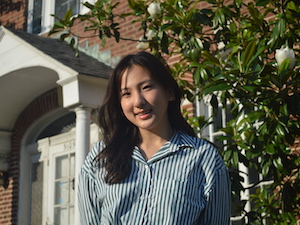 Sophia Park | Child First Authority at Calvin Rodwell Elementary/ Middle School
Sophia Park | Child First Authority at Calvin Rodwell Elementary/ Middle School
Unlike most of my peers, this week was a very relaxed week for me. I feel like this week can be perfectly described as “the calm before the storm.” The school has just closed for summer break, and only the administration for the summer programming has been coming into work. Throughout this week, I have been sitting in on planning meetings for the upcoming weeks. The program that I am working on is the Johns Hopkins Center for Talent Youth (CTY) program, and it is the first time Calvin M. Rodwell Elementary and Middle School are hosting this program. In the midst of this generally calm planning, there are some areas of stress that I did not anticipate. As I mentioned in my blog last week, this school is more than a school for most of the families of these students. It is also a place where their kids get fed, looked after, and taken care of. The CTY program does not offer daycare after school, and therefore, some families cannot make it in time to pick their kids up. As well, the teachers and administrators have to watch all the students eat at two separate times, before they, themselves, can eat. This puts a burden on scheduling, as we need to figure out when it is best for teachers to eat and how long we can give them for lunch. Logistically, it is also quite difficult to figure out where students can be picked up and dropped off. I think I failed to realize how much went into planning a typical schedule to accommodate a wide range of students. I always knew curriculum and teaching can be difficult but effective scheduling is a different feat in itself. I am excited to start interacting with teachers next week and to finally meet the incoming students in two weeks. I am still not quite sure what my role is within the program but I am open to all different types of responsibilities and assume that I will be taking on a variety of different challenges. My main goal for the next few weeks is to keep an open mind and absorb as much new information as I can!
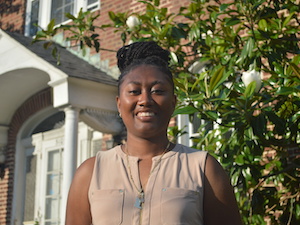 Abigail Quashie | St. Francis Neighborhood Center
Abigail Quashie | St. Francis Neighborhood Center
Last week, I spent most of my time familiarizing myself with my workplace and the surrounding area. I tested different bus routes in the morning and afternoon and finally decided on one that worked my best. I researched the history of the neighborhood center and Reservoir Hill. And I devoted a significant amount of time researching service learning. what it is, how it is different from community service, and how it will look different for different age groups. At the end of the week, I felt as though I had a fairly good understanding of service-learning and could explain it to anyone.
I still started week two with a bit of confusion around making the service-learning specific to the neighborhood center’s summer program. I was struggling to think of concrete project suggestions because I did not know much about the children in the program and what sort of things they were learning in school. Thankfully, this week I met with the teachers in the program, and speaking with them relieved a lot of my anxiety. I realized that I needed to quit the mindset of trying to plan by myself because it was not until I spoke with each of them that I got a better understanding of the children and what topics they would be interested in and what methods to use to teach them. For example, this week I learned from Ms. Ligon and Ms. Reagan that blocking out time for certain activities works best for younger children because their minds move so quickly, and their attention will quickly jump from one place to another. And thank goodness for that information because otherwise, I might have had those kids like mini-college students doing seminar-style learning. Another example: I also learned that many of the children who come to the center already have a background in learning about food insecurity, gardening, etc. so now, thanks to Ms. Arlene, I know that I can help them build on their previous knowledge instead starting from the very beginning. I ended this week with solid plans for each group’s service-learning projects and now I am excited, slightly nervous, but overall prepared to meet all the kids for the first time.
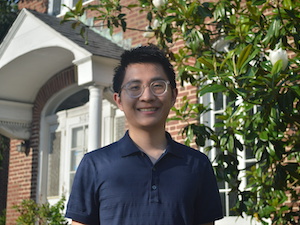 Ethan Wang | Code in the Schools
Ethan Wang | Code in the Schools
In Week 2, I have been adjusting to a more in-person work environment. As I’ve been working on an employee handbook and checking data, it is much easier to clarify and communicate with the team when they are right in front of you. After attending multiple meetings for the program management team, I’ve gradually learned about the multitude of decisions that are needed to be made in different steps of the planning process for the CodeWorks program in a few weeks. Watching team members communicate with youth CodeWorkers and parents, clarifying with YouthWorks, and preparing the computers and equipment for the CodeWorks program, I’ve grown to appreciate how each team member plays a different role that links together to continuously push forward the program.
And while I have been thinking about how I adjusted to an in person work environment, I am more interested in how the future CodeWorkers will adjust to the in person work environments. Given that the CodeWorks program was entirely virtual last year due to the COVID-19 pandemic, I am excited for the changes that will come with two cohorts: online and virtual. How will the two cohorts interact between each other and what kind of wonderful product can their union create? I do not know, but I am looking forward to the results of the interactions between the different CodeWorkers at the end of the summer.
In our BITES session on Wednesday, we talked about the school systems in Baltimore city. Learning about the structural barriers, especially with transportation in which students had to take multiple buses for hours just to get to school, made me wonder about my own work in Code in the Schools. How has the accessibility of computer science education been affected by structural barriers in Baltimore? I’m grateful to have learned more information about this issue, especially before I meet the CodeWorkers in the program that is launching soon.
